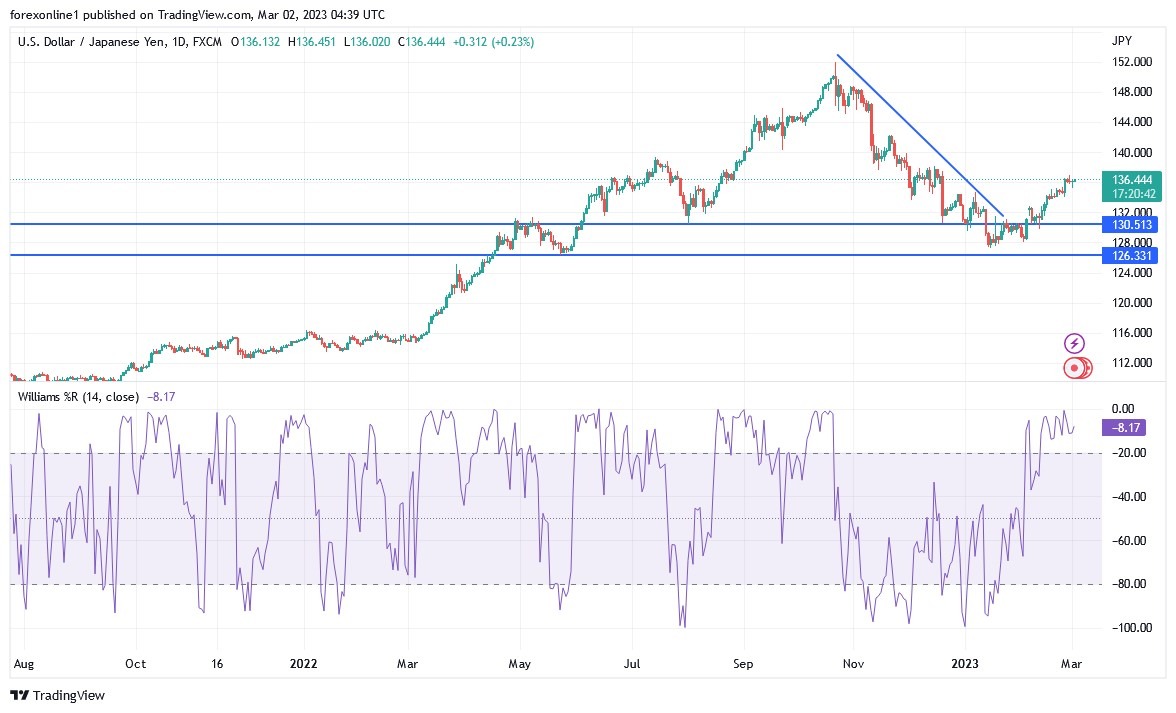For four trading sessions in a row, every time the bulls try to push the USD/JPY currency pair to cross the resistance barrier at 136.92, its highest in two months, it is exposed to profit-taking sales. Those gains were sufficient to push the technical indicators towards strong overbought levels. As I mentioned before, the currency pair's recent gains were primarily from the US dollar's gains from expectations of a US rate hike. In addition to the clarity of vision about the future of the policy of the Central Bank of Japan under the new leadership.
US stocks and bonds fell as investors revised their expectations of peak rates after a slew of data highlighted persistent inflationary pressures and Federal Reserve officials continued to tighten. Accordingly, the S&P 500 and Nasdaq 100 indexes fell after the manufacturing measure improved for the first time in six months. Investors baulked at the higher price action paid as well. Technology companies, which are usually sensitive to rising interest rates, dragged the S&P 500 lower. Energy stocks remained the index's best performer on Wednesday.
Treasury yields remained elevated, with the 10-year rate breaching the closely watched 4 percent level. The US Fed's swaps are now priced at a peak policy rate of 5.5 percent in September, with some betting that the benchmark interest rate could reach 6 percent. At the same time, the US dollar index fell.
Investors remained cautious after Fed officials reinforced their hawkish stance on Wednesday. Raphael Bostick of the Atlanta Federal Reserve called for continued interest rate hikes above 5 percent to make sure inflation does not pick up again. Meanwhile, Minneapolis Fed President Neel Kashkari said he was concerned there was not much evidence that the central bank's interest rate hike was slowing the services sector.
While economic data showing that the Chinese economy is on track for a stronger recovery briefly boosted US stock futures before markets opened, the rebound did not last during Wednesday's trading session.
Bonds in Europe also fell as evidence mounted that more tightening is needed to curb inflation. The latest data showed an unexpected acceleration in German inflation in February, further complicating the ECB's task after this week's excesses in other parts of the continent. The final ECB interest rate of 4 per cent is now fully priced in with rates expected to rise until February 2024.
Dollar expectations against the Japanese yen today:
- According to the performance on the daily timeframe chart, the bulls still control the general direction of the stronger USD/JPY currency pair.
- Its recent gains moved the technical indicators towards strong overbought levels.
- If the bulls do not gain more momentum, the currency pair may be exposed to operations Sell for profit at any time.
- Currently, the nearest resistance levels for the current bullish outlook are 137.00 and 138.85, respectively.
On the other hand, and over the same period of time, it broke the important support level 133.85, to start changing the general trend to bearish. Today, the currency pair will be affected by the announcement of the US weekly jobless claims, the non-agricultural productivity rate, and statements by some US monetary policy officials.
Ready to trade our Forex daily analysis and predictions? Here are the best regulated Forex brokers to choose from.


